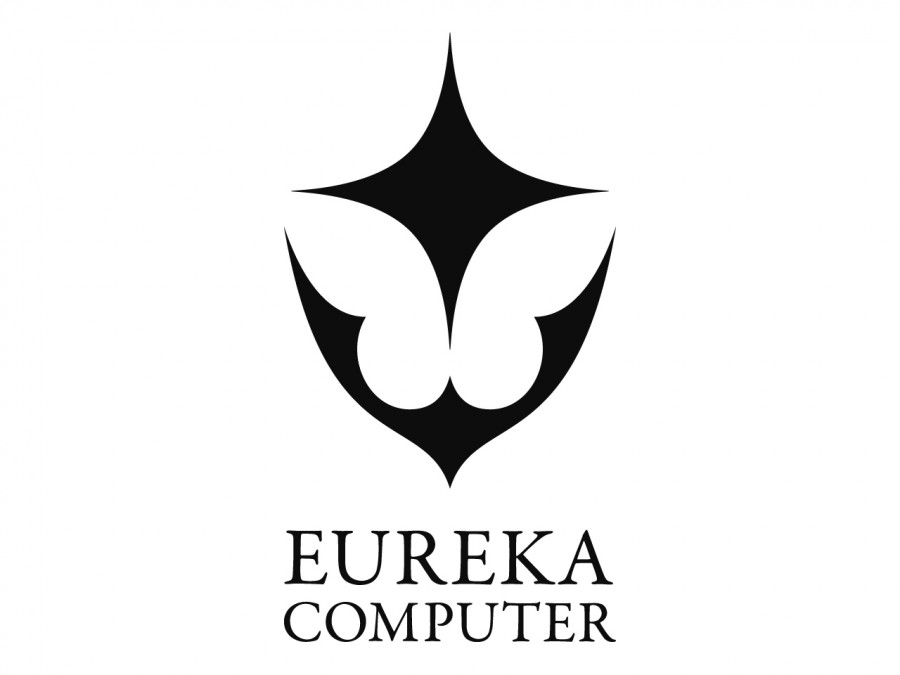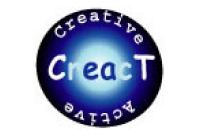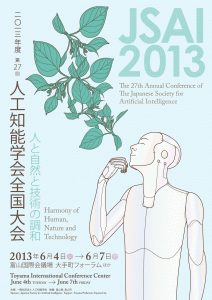基調講演

- 日時:2013年6月4日(火) 13:10-14:00(50分)
- 講演者:山口 高平
慶應義塾大学教授・人工知能学会会長
- タイトル:人の暮らしに関わるAI
- 概要:
Deep QA プロジェクト「ワトソン」が,米国クイズ番組「ジェパディ」において,人間のグランドチャンピオンに勝利して以来,はや2年が経過した.この間,日米で,スマートフォンで音声アシスタントアプリが実用化され,我が国では,国立情報学研究所において,「人工頭脳プロジェクト:ロボットは東大に入れるか(会誌Vol. 27, No. 5 )」が開始され,AIに対する世間の関心は高くなってきた.実際,会長就任以来,ほぼ毎月のようにマスメディアからの取材を受け,AIの開発の在り方,人とAIの付き合い方など,多くの質問を受け,AIに対する社会の関心の高さを実感している.講演者は,長年,知識システムの研究開発に取り組み,その有用性と限界を感じてきたが,今一度,知識型AIの歴史を振り返り,知識マネジメントやAIサービスの研究を例にとりながら,人の暮らしに関わるAIの在り方について述べたい.
- Speaker:Takahira Yamaguchi
Professor of Keio University and President of JSAI
- Title:AI Involved in Everyday Life
- Abstract:
Since Deep QA project “Watson” won human grand champions on TV quiz show “Jeopardy” in US, two years or more have already passed. During this time, intelligent personal assistants on smartphones come up with us in practical use. Furthermore, in Japan, AI project “Can a Robot Get into the University of Tokyo?” (JSAI Journal, Vol. 27, No 5) has get started with NII researchers. The R&D has made many people have much interest with AI. In fact, I have been interviewed by Japanese mass media almost every month after becoming JSAI president, asked the followings: the state of development of AI, how should be the relationship between humans and AI, and so on. As my major work is knowledge systems, I want to talk about the state of AI involved in everyday life, taking knowledge management systems with AI and AI services.
- 講演資料(PDFファイル・127KB)
- 講演スライド(PDFファイル・1.5MB)
招待講演

- 日時:2013年6月5日(水) 10:50-12:10(80分)
- Speaker:William J. Clancey
Senior Research Scientist for Florida Institute for Human and Machine Cognition (on appointment to NASA Ames Research Center, 1998-2013)
- Title:Human-Robotic Interaction in Planetary Field Science: The Role of AI on the Mars Exploration Rover Mission
- Abstract:
The Mars Exploration Rover (MER) mission has shown over nine years how people can scientifically explore another planet using a programmable, mobile scientific laboratory. This endeavor is called “planetary field science,” relating laboratory analysis and in situ observations across the disciplines of geology, chemistry, biology, and atmospheric science. To carry out a systematic and opportunistic investigation of the martian surface, the MER robots are sent daily programs to control their movements and use of instruments, as well as to keep their power, computer, communication, and mobility systems healthy. Human operations on Earth and robotic operations Mars are related by computer systems that use AI methods of constraint-based planning and virtual reality that enable engineers to translate the objectives of scientists to robotic operations. This overall “exploration system” provides a unique kind of human-robotic interaction. The robot serves as a physical surrogate?enabling people to see, analyze and manipulate materials, and explore a remote landscape, such that they project themselves into the robot’s body. Rather than replacing the scientists, the rover’s automation makes them agents on another planet; and by the synergistic design of the instruments and computer programs, the laboratory becomes a tool that promotes multidisciplinary collaboration.
- 講演資料(PDFファイル・53MB)
特別講演1
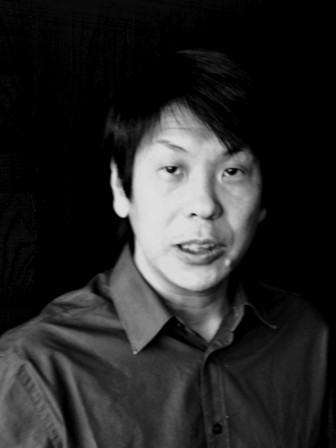
- 日時:2013年6月6日(木) 11:10-12:20(70分)
- 講演者:井上 克巳
国立情報学研究所 情報学プリンシプル研究系教授
- タイトル:説明と予測:科学的発見からレジリエンスへ
- 概要:
科学の歴史は人類の発見の歴史である.科学的発見について詳しく分析すると,発見のための方法論というものが存在している.仮説を用いた思考法をモデル化し,計算機上で実現してやることで仮説発見の自動化が期待できる.情報技術が発達し,膨大な情報を扱わなければならない今日においては,発見の作業もコンピューター抜きにはすでに難しくなってきており,発見の自動化について改めて考えることは重要である.この技術は,科学的発見のみならず,ビジネスアプリケーションや日常生活の多くの場面でも活用できる.本講演ではまず発見の科学の歴史と人工知能による発見の自動化について述べ,講演者が開発してきた推論による仮説発見,仮説の確率的評価,メタレベル・アブダクション,システム生物学への応用等について紹介する.発見過程では,既存の理論では説明できない事象に対して,それを説明するための仮説を導入することで真の発見に結び付けようとする.この場合の事象は予期していなかったものになり,時間的には事象が現在のもので,仮説は過去に起こった事象または時間的に普遍な規則になる.この推論を,逆に現在から未来へと進めると事象の予測に使える.予測不可能な事象はアブダクションでは説明できないものであり,可能世界意味論では到達不可能な状態になる.この予測の科学に関連して,自然災害などの想定外事象を取り扱うために「システムズ・レジリエンス」と呼ばれる新しい研究分野に携わっており,震災後の科学者のあり方として,新しい発見 (discovery) だけではなく,望ましい状態への回復 (recovery) のためのサイエンスが重要であると考えている.
- Speaker:Katsumi Inoue
Professor, National Institute of Informatics
- Title:Explanation and Prediction: From Discovery to Recovery
- Abstract:
In the history of science, there exist the philosophy and methodology for scientific discovery. If this methodology of discovery processes were modeled and automated, scientific discovery could be realized on computers. Already it has become that scientists cannot work without computers, in the era of information technology with a huge amount of information and data, it must be important to think anew about the automation of discovery. Not only in scientific discovery, but this technology can be utilized in many areas of daily-life and business applications. In this talk, I will first review the history of science and the automation of discovery by Artificial Intelligence, and will introduce my past works on inference-based hypothesis-finding, stochastic hypothesis evaluation, meta-level abduction, and application to Systems Biology. In the science of discovery, for an event that cannot be explained by the existing theory, a hypothesis to explain it is produced by abduction and is then attempted to connect to a true discovery by evaluating it. In this case, the event has not been expected in the current situation, and the hypothesis is a cause that happened in the past or is a universal rule. To the contrary, if this reasoning is performed forward from the present to the future, we can make a prediction of an event. Then an unpredictable event is an event that cannot be explained by abduction, and corresponds to an unreachable state in the possible world semantics. Related to prediction, I have been involved in the new research area called “Systems Resilience” as a science to deal with unexpected events such as natural disasters. As a scientist who lives after the 3.11 earthquake disaster, along with the science of “discovery”, I now believe that the science of “recovery” is important as well.
- 講演資料(PDFファイル・51KB)
特別講演2
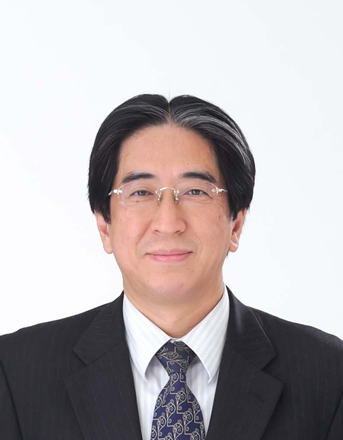
- 日時:2013年6月7日(金) 11:30-12:40(70分)
- 講演者:富山大学工学部長・教授 堀田 裕弘
- タイトル:コンパクトシティ富山におけるスマートICTを活用した付加価値創生
- 概要:
コンパクトシティとは,都市的土地利用の郊外への拡大を抑制すると同時に中心市街地の活性化が図られた,生活に必要な諸機能が近接した効率的で持続可能な都市,もしくはそれを目指した都市政策のことを意味しています.これは,効率的な公共交通システムに基づいており,人々の徒歩での行動や自転車利用を促進し,低エネルギー消費と低汚染を実現する環境未来型の都市計画ともいえます.
富山市は,県庁所在地で一番都市部の人口密度が低い都市であり,住民は都市から郊外へ住み着くスプロール化の傾向がありました.その関係で,住民の自動車への依存度が高く,公共交通機関の利用が年々減少傾向にありました.そこで,富山市は,これまでの自動車に依存した広域都市形成から,公共交通を軸としたコンパクトシティへと転換し始めました.
地方都市のスプロール化の問題を軽減する別のアプローチは,スマートなICTを用いた情報の付加価値創造にあると考えています.公共交通はコンパクトシティ構想を実現するための大事な基盤であり,LRT(次世代型路面電車システム)は次世代の交通システムとして期待されています.そこで,LRTなど公共交通の利用客のために生活の質向上に必要な様々な地域情報を,情報通信技術(ICT)を利用して付加価値な情報として提供することで,地域都市のスプロール化の改善に貢献できると考えています.これらを実現するために,トラムのサイネージシステム,路面電車拡張現実(AR)システム,路面電車の位置情報配信とルートナビゲーションシステムなどが開発されました.
本講演では,コンパクトシティ富山の概念について説明し,これらのシステムの概要と実証実験について説明いたします.
- Speaker:Yuukou Horita
Dean (Faculty of Engineering), Professor, University of Toyama
- Title:Creating Added-Value for Compact City Toyama Using Smart ICT
- Abstract:
The Compact City is an urban planning and design concept, which promotes relatively high residential density with mixed land uses. It is based on an efficient public transport system and has an urban layout which encourages walking and cycling, low energy consumption and reduced pollution.
Toyama City (population: 418,000) has the lowest urban population density among other prefectural capitals in Japan. Trend shows that population has been migrating from the city center to the suburban areas. People are thus more dependent on cars and the use of public transport has seen a significant drop. As a result, Toyama City has been trying to change its town structure from the current car-dependent wide city spread to a compact city along the public transport routes.
Another approach to reduce the problem of automobile dependence associated with the urban sprawl is creating added-value by using smart ICT. The public transit system plays a major role in accomplishing the compact city concept and the Light Rail Transit (LRT) is considered to be the next generation transportation system.
Local residents need a constant flux of information concerning everyday life to increase the quality of life. By providing regional information based on the added-value smart ICT, we can expect to reduce problems of automobile dependence associated with urban sprawl. To accomplish this, we have developed three systems and installed them in 3 tram Centrum line, Tram Signage System, Tram Augmented Reality (AR) System, Tram Location and Route Navigation System.
In my presentation I will explain the conception of Compact City TOYAMA, I will present an overview of these systems and the current status of the research based on experiments conducted in three trams since February 2012.
- 講演資料(PDFファイル・160KB)






